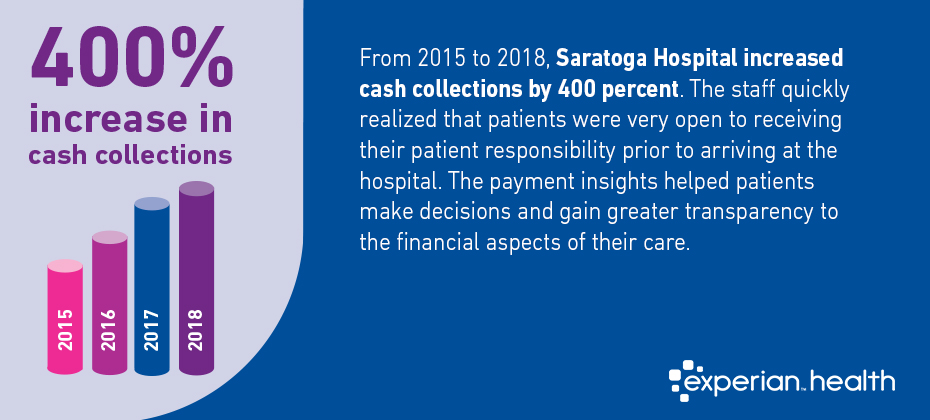
Patients are paying significantly more for healthcare these days. The typical patient spent $10,739 in 2017, compared to just $355 in 1970. And the percentage of people with private insurance enrolled in high-deductible plans continues to grow, reaching about 47 percent in 2018. More than ever, patients are demanding to know upfront how much they will be paying for the services they need.
Saratoga Hospital, an organization of 450 physicians and other medical professionals in Saratoga Springs, New York, was like many hospitals around the country. It was struggling to give accurate estimates for patient responsibilities.
Wading through the many insurance plans and rules associated with them to figure out what is covered and how much can be a confusing and time-consuming task for hospital staffers. The sheer volume of information, various medical billing codes, and more hampered efforts to provide transparent estimates at Saratoga Hospital.
To ensure patients wouldn’t be hit with costly surprise bills later, the hospital first needed to know how much patient insurance would cover for each service provided.
In 2016, Saratoga Hospital began using Experian Health’s Patient Estimates, a web-based pricing transparency tool for hospitals, medical facilities, and physicians that tells patients the cost of services at a particular healthcare organization. For example, the tool combines all related charges to estimate an accurate bill for a patient’s appointment, which might include blood tests, medicines, facility fees, and the physician’s charge.
In addition, information such as deductibles, co-pay, and co-insurance are calculated into the tool, as are financial assistance policies for patients without insurance, including discounts for prompt payments, state-mandated discounts, and payment plans. Using all of these variables makes estimating payments much easier, and it produces greater accuracy.
By training its preregistration department to use the Patient Estimates tool, Saratoga Hospital could accurately estimate authorized services for patients at the point of service (or even before), streamlining price transparency requests.
This proactive approach engages patients because it keeps them informed of their responsibilities and improves their overall experience and satisfaction. Addressing this aspect of medical care is essential, considering that 85 percent of adult patients are concerned with their medical costs.
Saratoga Hospital staff quickly found that patients embraced the transparency because it helped them understand their financial responsibility for receiving care before stepping into the hospital. This helped them make quicker, more informed decisions.
The hospital’s staff, equipped with a more comprehensive knowledge of what patient insurance was authorized to handle, was also more confident in requesting payments for services before they were administered.
The numbers at Saratoga Hospital speak for themselves: Cash collections increased by 400 percent from 2015 to 2018.
As the demand for price shopping continues to grow among health consumers, price estimates can be incorporated into an online service that creates personalized estimates.
At every turn, greater transparency and efficiency in the payment process benefited patients and Saratoga Hospital alike. It provided a boost and highlighted the importance to the hospital’s preregistration department, giving staffers the necessary training to use and maintain the Patient Estimates tool properly. And implementing the tool also led to improved quality assurance, an increase of refunds, and more efficient handling of canceled appointments.
To learn more about Saratoga Hospital’s experience with price transparency, click here to watch a quick video about its success and to download the case study.

